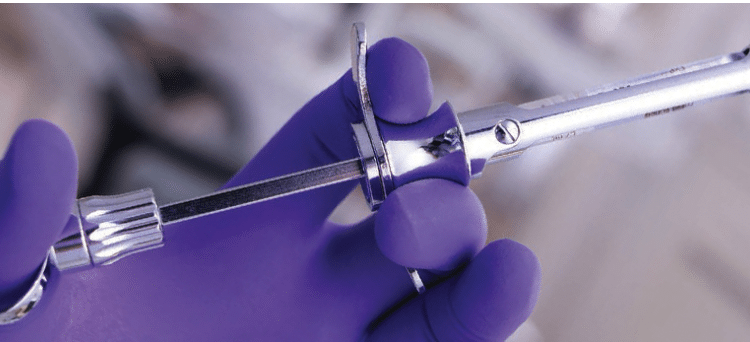Tips on Alleviating Fears and Creating a Welcoming Environment

Dimensions Brand Ambassador Veronica Bonta, BS, RDH, describes the tactics she uses when an anxious patient sits in the dental chair. From deep breathing to tinted glasses, clinicians can recommend various calming techniques to patients who need some help feeling less anxious at the dental office.
I have a huge soft spot for patients with dental fears and anxiety. When I was a kid, I was absolutely petrified of the dentist. I remember not being able to sleep the night before an appointment and my stomach just being in knots until it was all over. For me, fear came from the unknown: what are they doing to my tooth? Am I getting an injection? Will it hurt?
I’ve obviously outgrown my fears, but because of my own experiences, I really embrace the opportunity to put anxious patients at ease and create a welcoming atmosphere.
DENTAL ANXIETY ETIOLOGY
Along with fear of the unknown, there are some other common and typical reasons why patients have dental anxiety. Patients often tell me they had past traumatic experience with dentistry, or are generally afraid of needles and/or the dreaded “drill.” Another common reason is that the sound of scaling or the ultrasonic scaler is too much for some to bear. Lastly, and possibly the worst reason, is that patients have delayed or avoided dental treatment for so long out of fear, that they are now in pain and more scared than ever.
Additionally, the general atmosphere of the practice alone can be intimidating. We, clinicians, are sort of immune to it, but the sights and sounds of our offices can be anxiety provoking. Imagine the smell of the dental office, the whistle of the high-speed handpiece, the roar of the suction pump, or the visual of all the materials on the tray set-up. It can all be overwhelming for someone who is fearful. It can be a total nightmare.
TALK IT OUT
Reducing patients’ fears and anxiety starts with communication. The goal is to successfully convey to patients that we care about their health and empathize with their concerns and position so they will be at ease throughout their appointment and be motivated to return. Connecting with patients on a personal level also helps to lighten the atmosphere and form a relationship. I’ll often start by asking how their weekend was, or if they have any upcoming trips planned.
I always want patients to feel like they can freely talk to me. I encourage them to ask questions and let me know if anything is not clear. I also assure them that they are not alone and that many other patients share their fears. Sometimes I even include my own dental anxiety experiences with them.
When we proceed to actual treatment, I use the tell-show-do method. I try to make it clear exactly what I am doing and why. I explain what their hygiene appointment will entail. I also use visual aids, such as typodonts, diagrams, intraoral photos, and radiographs to help explain treatment and conditions. Typically, after the verbal and visual explanations, patients have a better grasp on what hygiene treatment they need and why. Using this technique allows the patient to feel like they are a part of the treatment planning and that they have some control on what is going on.
GO THE EXTRA MILE
While communication is the most important approach, there are also a few other small additions that can go a long way in improving anxious patients’ experiences. They also benefit the clinician, because the more patients are at ease, the easier it is to get our job done.
- Headphones: A patient favorite! I encourage patients to bring their headphones to listen to music or a podcast. This is especially helpful for those who are sensitive to the sound of scaling.
- Tinted safety glasses: Patients should be wearing eyewear anyway and the tint helps with the harsh overhead and loupe lights.
- Topical benzocaine: Another patient favorite! I usually offer topical to all of my anxious patients. It just helps take the edge off of the scaling.
- Blankets/pillows: I even have one patient who likes to wear the lead apron during her appointment.
- Stress balls
- Essential oil diffuser
When a patient comes to us with fears, we have an amazing opportunity to help reshape their perception of dentistry. It isn’t always easy and requires a little extra compassion and patience, but if we are successful we will be setting that patient up for a healthy dental future.






Responses